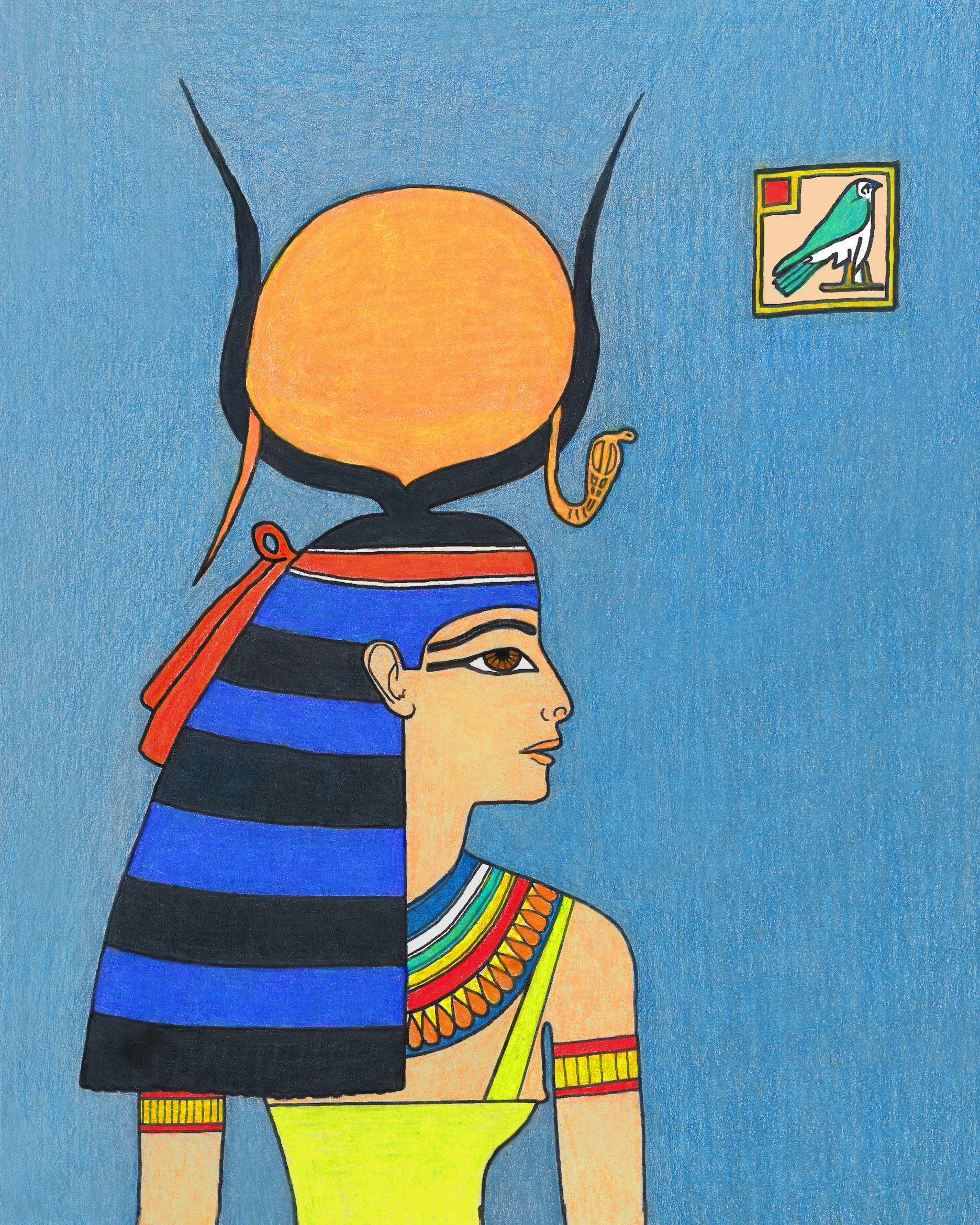
Friday, January 9, 2015
"Hathor's Mysterious "Tjetsen"
5:45am
Again, I'm in Bleeker's Hathor and Thoth: Two Key Figures of the Ancient Egyptian Religion. He makes reference to a "tstn", seen elsewhere as "tjetsen".
The soul who has passed on has a unique relationship with Hathor. Bleeker says "the deceased declared that he serves Hathor in other ways by carrying out all sorts of commissions for her. A special privilege is that he is permitted to attend to part of her toilet: he fastens her [tstn], a garment or ornament of unknown form and purpose. Thus the deceased says: 'I have come to fasten the [tstn] of Hathor."5 (page 45)

He gives clues later on in the book: "certain components of her apparel, named specifically, are significative.
This applies firstly to the [tjetsen].5 In II D we saw how the deceased prides himself on being allowed to fasten the [tjetsen]. This simple act gives him the privilege of participating in the festival of Hathor.1 The determinative of
[tjetsen] suggests that it was a breast or neck ornament which had to be knotted.(Pages 58-59)
Something which had to be knotted? My search of the web revealed nothing except one reference: "Once in the Underworld, the deceased could be assured of safe passage through the demons of the Island of Fire by possessing her outer garment, the tjetsen."
Hmmm, so now we have an outer thing which must be knotted. Looking at Horemheb's tomb images, we find at least three images of Hathor and one of Isis with a knotted band around the head:
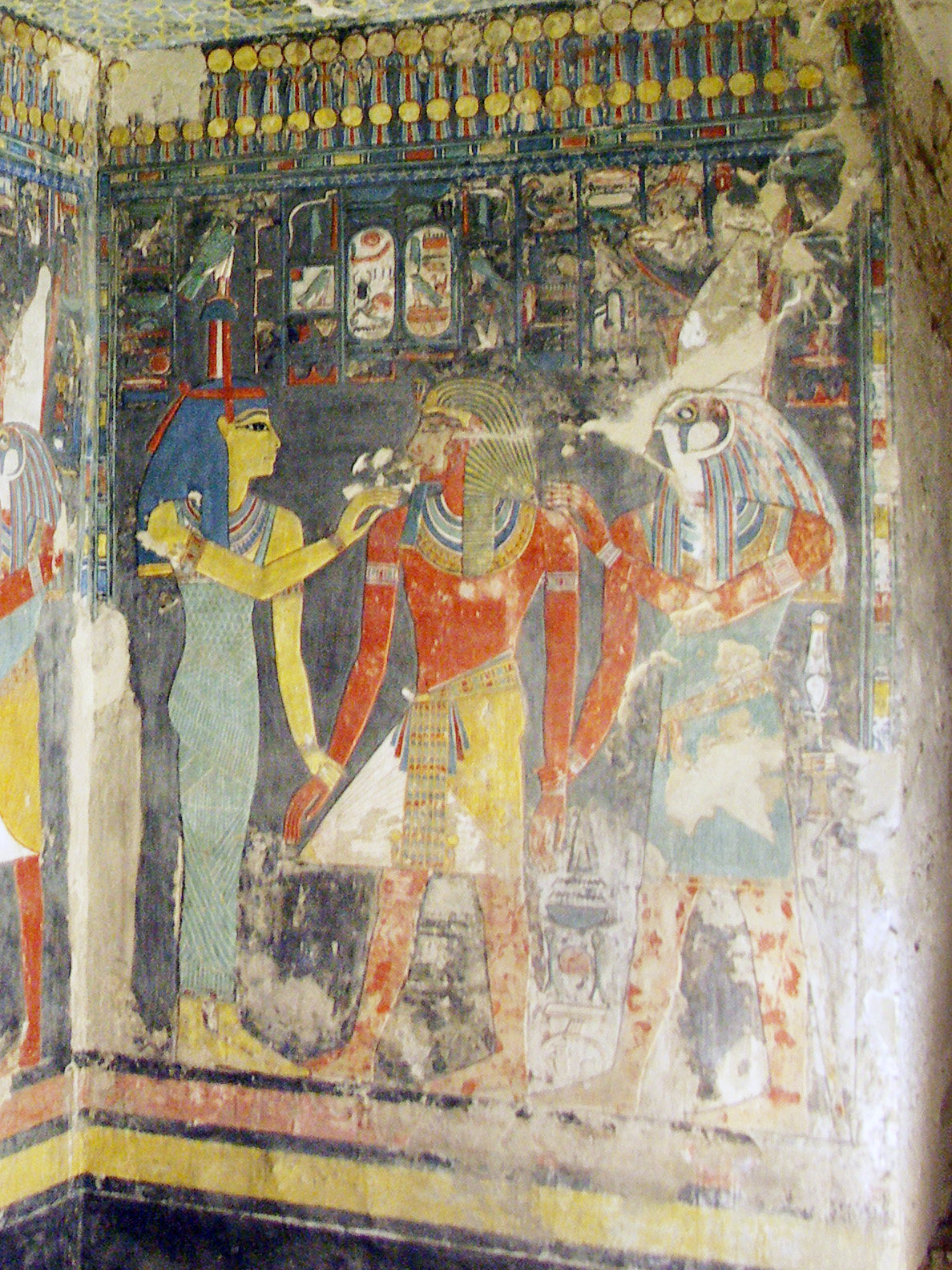
Photo courtesy William Petty
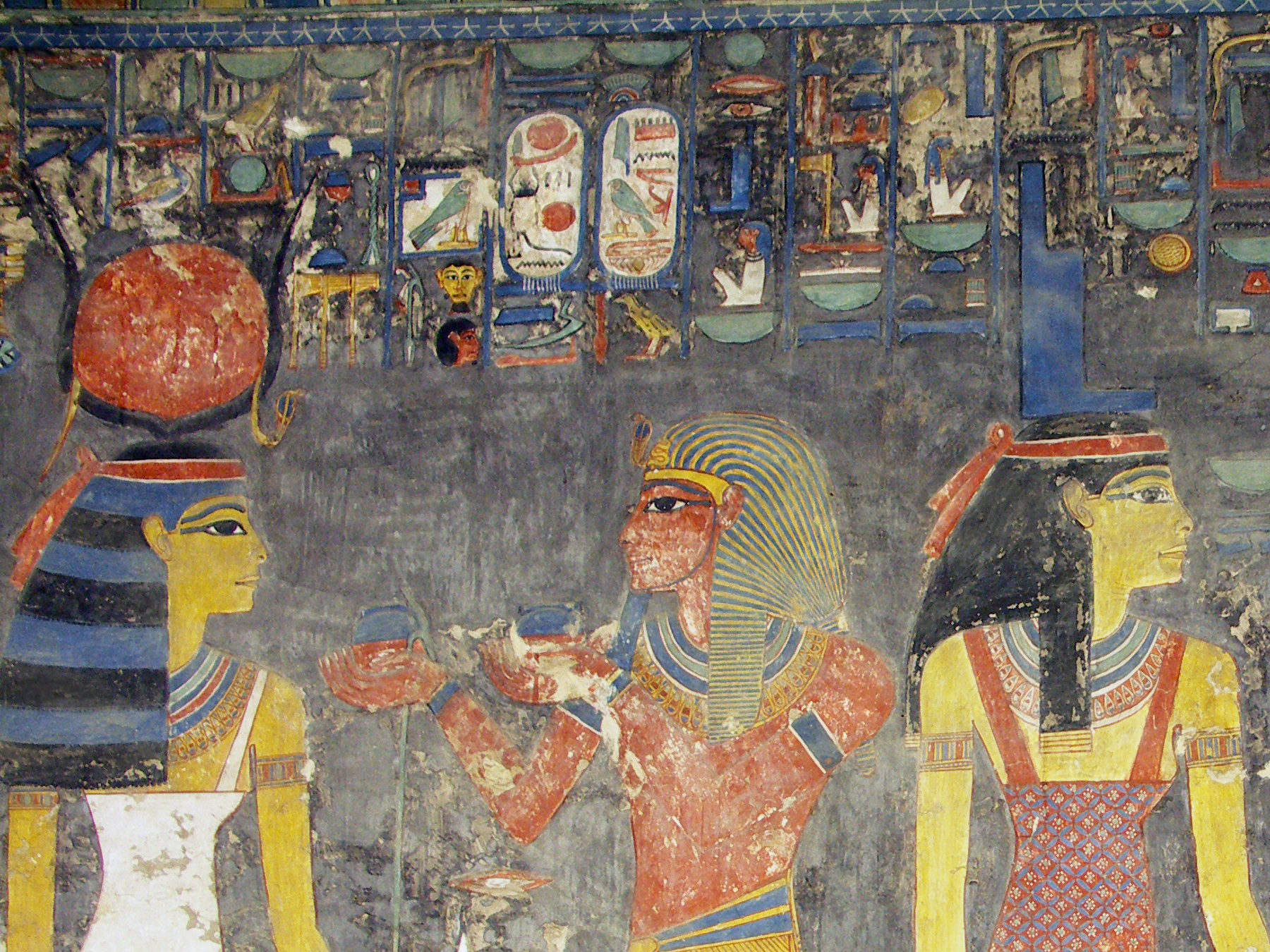
Photo courtesy William Petty
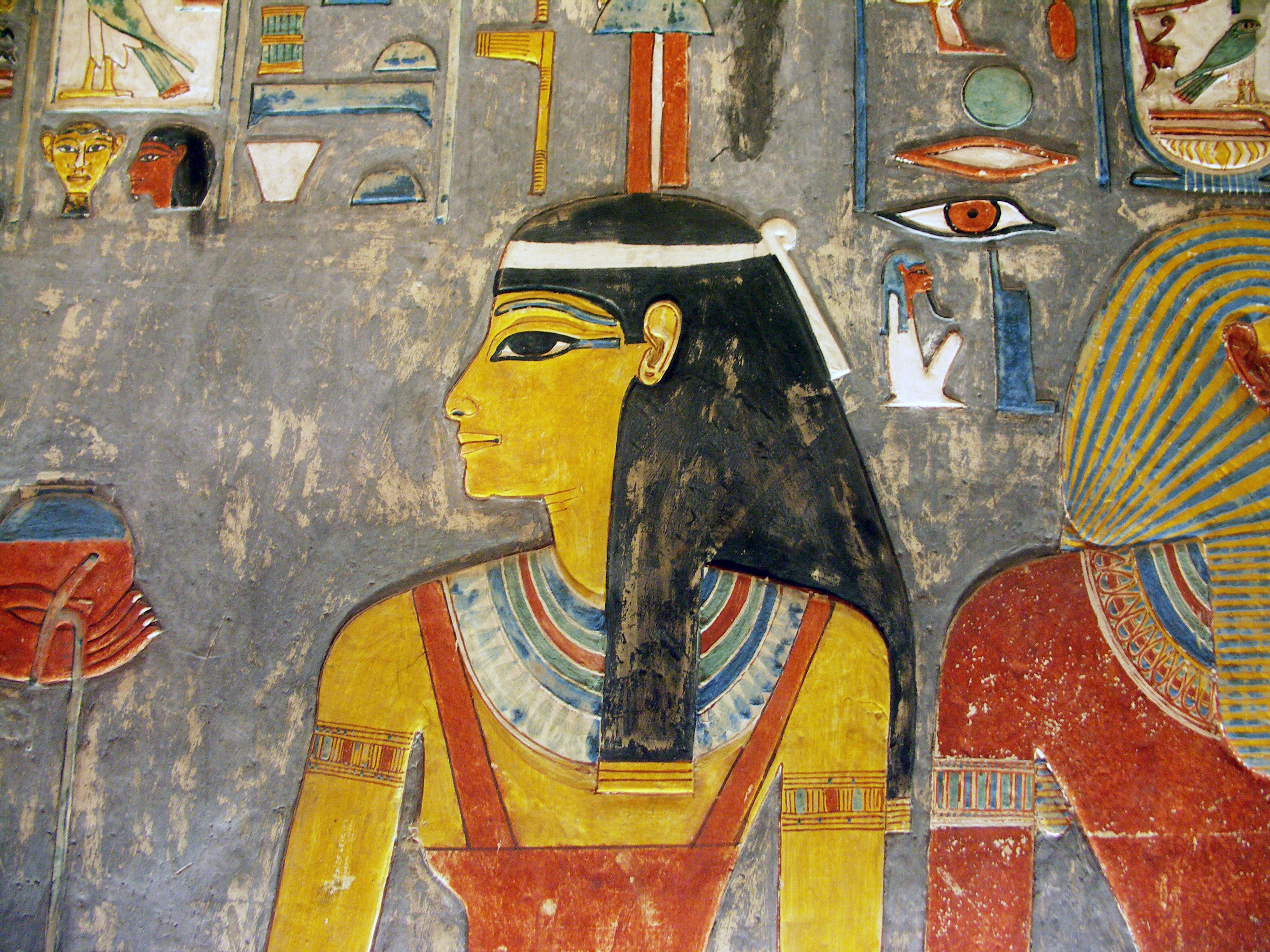
Photo courtesy William Petty

Friday, January 9, 2015 A
Friday, January 9, 2015 B
"Hathor with her Hair Tie"
8:57am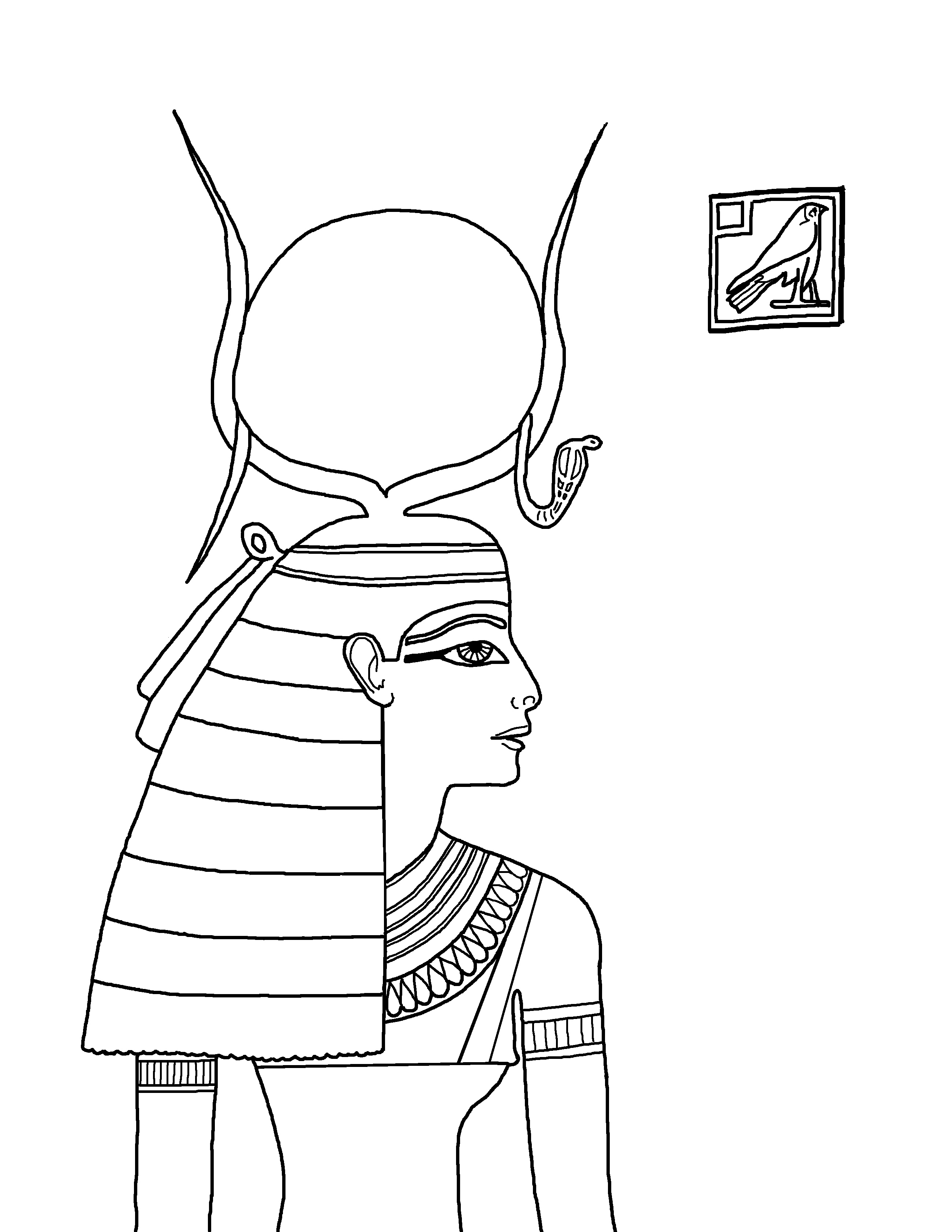
Printable and colorable line drawing of Hathor, based on her representation in KV 57
"A Possibility"
6:01pm
Ink pen and colored pencil on acid free paper, 17.8 x 25.3 cm (7 x 10 in.),

Sunday, January 11, 2015
"Colorful Hathor with her Hair Tie (Revised Nov. 2015)"
8:57am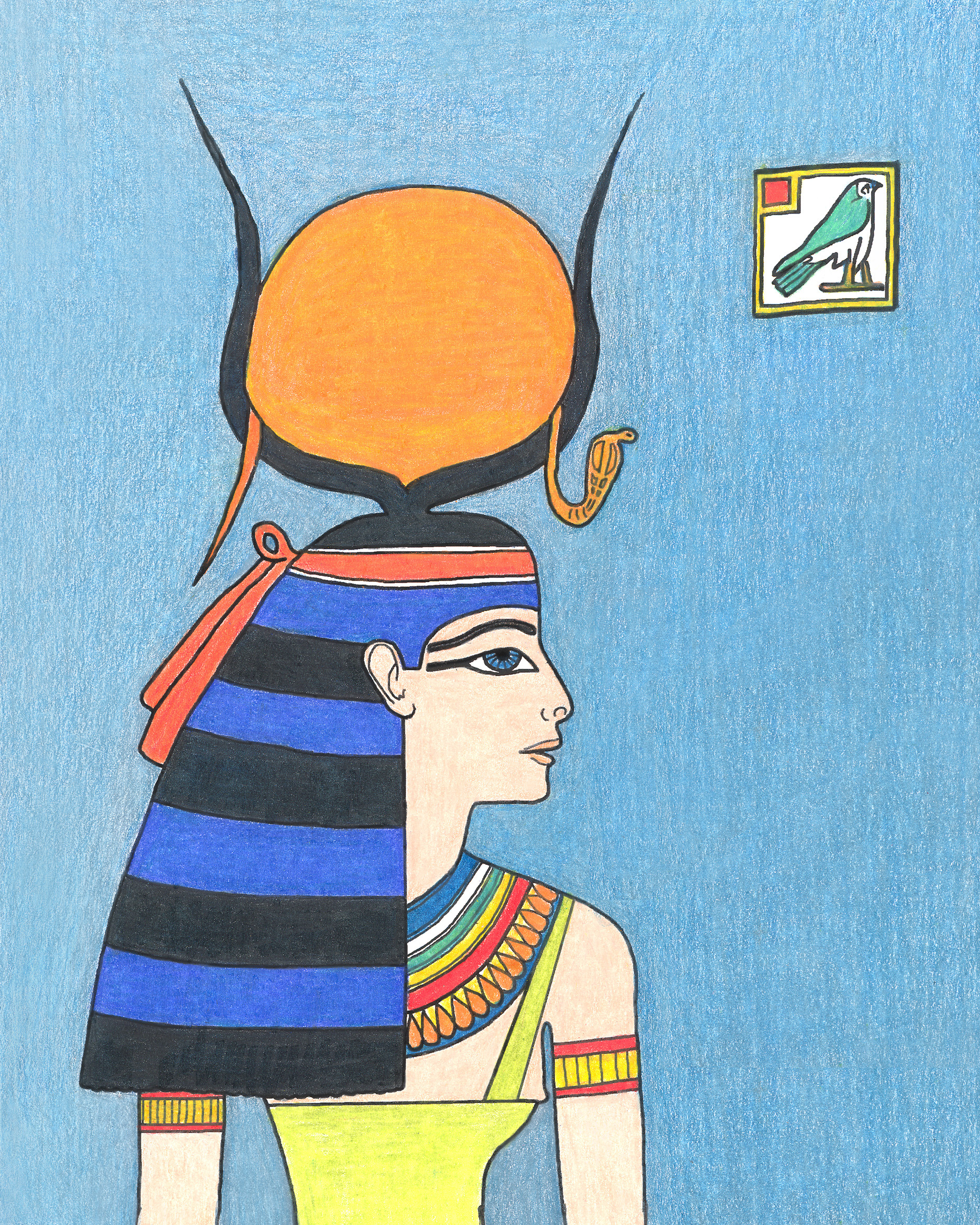
I couldn't resist the temptation of coloring the line drawing!
Perhaps that's partly what its coloration was intended to convey. Bleeker explains:
"Hathor in the presence of the sun-god during the various stages of his diurnal course suggests that here she is conceived of as goddess of the diurnal sky. Undoubtedly she did fulfil this role, but there are solid grounds for considering her to be primarily the goddess of the nocturnal sky."
He goes on to explain those grounds:
"The reasons for the interpretation of Hathor as goddess of the nocturnal sky are as follows. The prehistoric Hathor-head mentioned in IIC has stars at the points of the horns, at the ears and on the forehead. This indicates the nocturnal sky, as does the well-known epithet 'mistress of the stars'.", Hathor and Thoth: Two Key Figures of the Ancient Egyptian Religion,(page 47)
For some reason, I find myself thinking of Byron's poem:
SHE walks in beauty, like the night
Of cloudless climes and starry skies...
